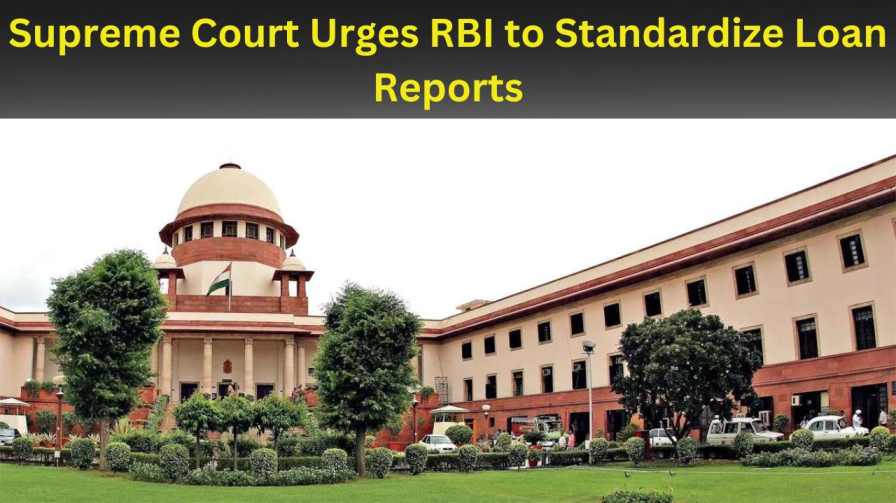In a landmark ruling delivered on January 9, 2025, the Supreme Court of India issued a strong directive to the Reserve Bank of India (RBI) and other key stakeholders to implement a standardized framework for preparing title clearance reports for property loans. The Court’s judgment has brought to light the critical gaps in the current system, emphasizing the risks posed by poorly prepared title reports and the subsequent threat to public funds and trust in the banking sector.
This development marks a turning point in how banks approach title verification for properties mortgaged to secure loans. The judgment underscores the urgent need for a uniform mechanism, greater accountability, and higher quality in the preparation of title search reports.
The Importance of Title Clearance Reports
A title clearance report is a legal document that verifies the ownership and history of a property. It is designed to ensure that the property is free of encumbrances, disputes, or legal claims. This report acts as a foundation of trust for buyers, lenders, and banks involved in property-related transactions.
For banks, these reports are indispensable when granting loans against mortgaged properties. They rely on title clearance reports to ensure that:
- The borrower has a legitimate claim to the property.
- The property is free from disputes or adverse claims.
- There is no pre-existing mortgage or lien on the property.
However, inconsistencies and lapses in the preparation of title reports have led to significant risks for banks, including financial fraud, litigation, and the loss of public money.
The Supreme Court’s Observations
The Supreme Court bench, comprising Justices JB Pardiwala and R Mahadevan, delivered the judgment after reviewing a case involving a bank that sanctioned a loan against a mortgaged property, which later turned out to have unresolved title disputes.
In its ruling, the Court highlighted:
- Risks to Public Funds:
The Court noted that inadequate title clearance reports jeopardize public money and erode confidence in the banking system. - Need for Accountability:
The Court called for accountability within the banking sector, emphasizing that officers who approve loans based on defective title reports must face liability, including potential criminal action. - Uniform Guidelines for Title Reports:
The absence of a standardized mechanism for preparing title reports has left room for inconsistencies and errors. The Court urged the RBI and stakeholders to collaborate in creating practical and robust guidelines for preparing such reports.
Key Excerpts from the Judgment
- On Public Interest:
“Banks must exercise extreme caution with inadequate title clearance reports, especially when these reports are obtained at low costs or influenced by external factors”. This concerns the protection of public money and is in the larger public interest.” - On Accountability:
“The liability, including potential criminal action, of bank officers who approve loans based on defective title search reports must be determined.” - On Standardization:
“The Reserve Bank of India and other stakeholders must work together to establish a standardized and practical framework for preparing title search reports prior to loan sanctioning.”
Current Challenges in Title Clearance Reports
At present, no uniform mechanism governs the preparation of title clearance reports. Banks typically rely on empaneled lawyers or chartered accountants to prepare these reports. However, this system is riddled with challenges:
| Challenges | Impact |
| Inconsistencies in Preparation | Varying quality and thoroughness lead to errors and omissions in title reports. |
| Lack of Standard Fees | Disparities in fees can result in low-cost, substandard reports that compromise due diligence. |
| Dependence on Empaneled Experts | Limited oversight and quality control over external consultants preparing reports. |
| No Uniform Guidelines | The absence of standardized protocols leads to discrepancies in the verification process. |
The Need for Reform
The Supreme Court’s call for reform is grounded in real-world examples of banking malpractice and property-related disputes. One such case involved a bank that sanctioned a loan against a property with unresolved title issues, resulting in financial loss and legal complications.
Had a robust title search process been in place, the ownership history, encumbrances, and adverse claims could have been identified before the loan approval, preventing such fraudulent transactions.
Supreme Court Recommendations
The Court has made several recommendations to address the current shortcomings in the system.
1. Standardized Framework for Title Reports
The RBI, in collaboration with stakeholders, should develop a standardized framework that outlines:
- The scope of title verification.
- Mandatory checks for ownership, encumbrances, and claims.
- Format and content of the report.
2. Accountability Mechanisms
The Court emphasized the need for holding bank officers accountable for approving loans based on defective reports. This includes:
- Internal audits to review the quality of title reports.
- Liability clauses for officers and consultants involved.
3. Standardized Fees and Costs
To ensure high-quality reports, the Court suggested standardizing the fees and costs associated with title searches. Uniform pricing would deter banks from opting for low-cost, substandard reports and encourage thorough due diligence.
Implications for Stakeholders
The Supreme Court’s judgment has far-reaching implications for various stakeholders:
- Banks and Financial Institutions:
- Greater responsibility to verify the quality of title reports.
- Stricter internal audits and accountability mechanisms.
- Borrowers:
- Enhanced transparency in the loan approval process.
- Reduced risk of fraudulent transactions.
- Legal Professionals and Consultants:
- Increased demand for high-quality, standardized title reports.
- Higher scrutiny and accountability for their work.
- Regulatory Bodies (RBI):
- Role in framing and enforcing guidelines for title clearance reports.
- Oversight of compliance by banks and other financial institutions.
Future Outlook: Building Trust in the System
The Supreme Court’s directive to the RBI serves as a wake-up call for the banking and financial sector. By addressing the gaps in the title clearance process, stakeholders can:
- Protect public funds.
- Restore trust in the loan approval system.
- Minimize disputes and fraud in property-related transactions.
As we move forward, the implementation of standardized frameworks, coupled with greater accountability, will play a crucial role in ensuring that the banking system remains robust and trustworthy.
Conclusion
The Supreme Court’s call for standardized title clearance reports is a significant step toward safeguarding public money and enhancing transparency in the banking sector. By urging the RBI and stakeholders to collaborate on creating a uniform framework, the judgment highlights the importance of due diligence, accountability, and quality control in the loan approval process.
This ruling not only addresses the immediate risks posed by inadequate title reports but also sets the stage for a more reliable and transparent financial ecosystem in India. For banks, borrowers, and regulatory authorities, this is an opportunity to rebuild trust and ensure that public funds are utilized responsibly.
Disclaimer: The views expressed in this article are based on the Supreme Court’s judgment and its implications as of January 2025. Regulations and practices may evolve over time.





